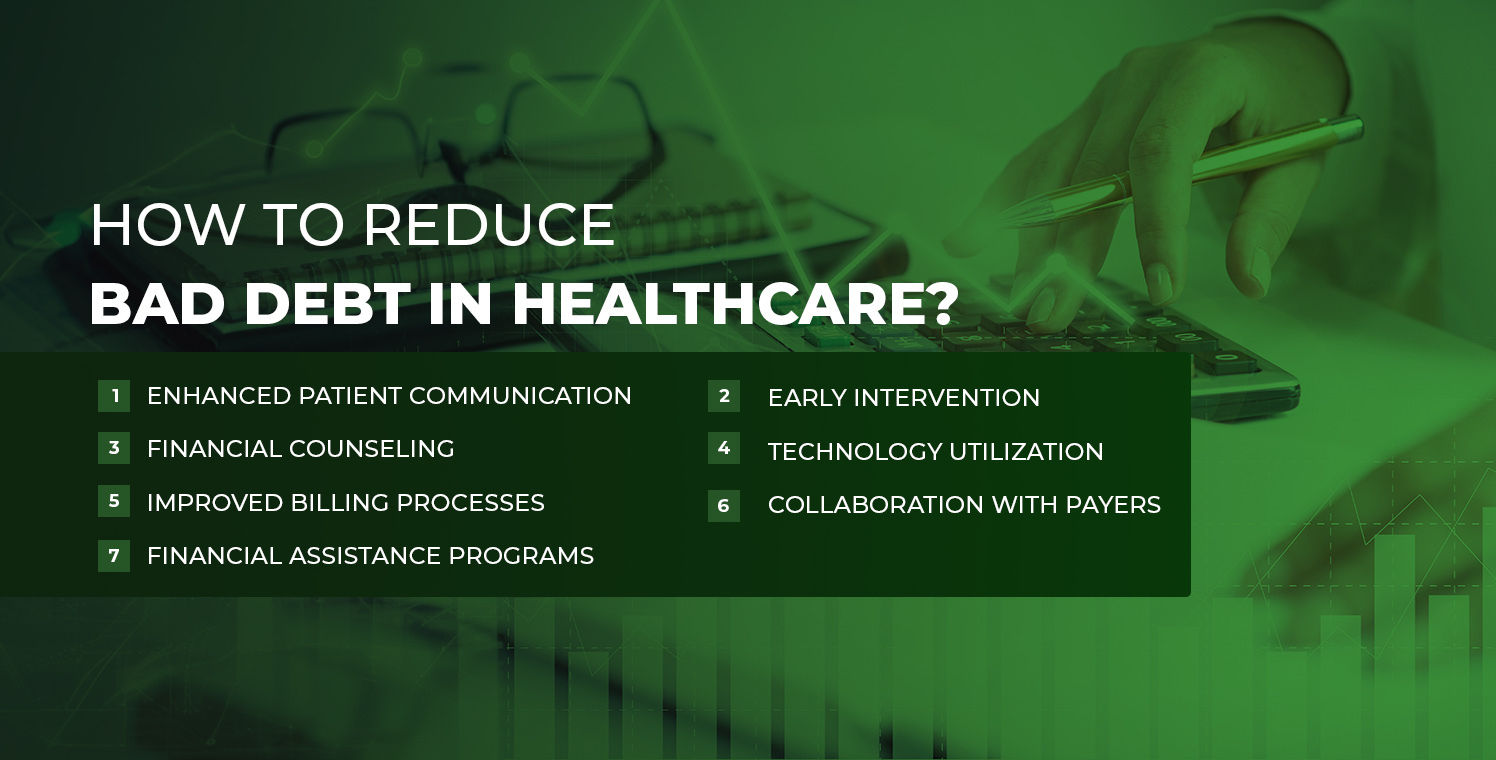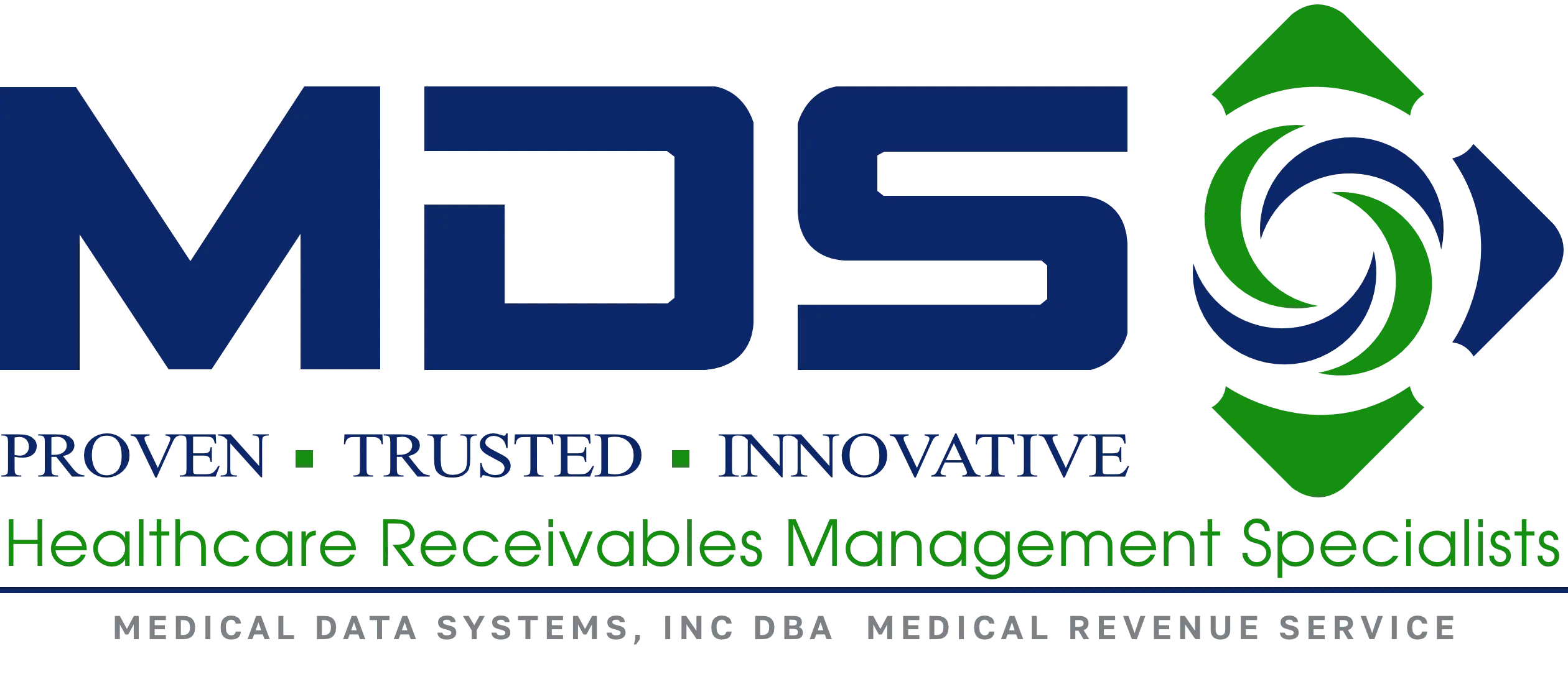Table of Contents
One of the significant challenges faced in the healthcare sector is managing write-offs or bad debt. This is a common term, but clinics running small ownership may wonder, ‘What is bad debt in healthcare?’ Denied claims, outstanding bills, unpaid bills, and unrecoverable dues impact a healthcare business’s financial resources.
According to the TSYS Annual Healthcare Survey, 22% of physician practices reported 10% bad debt in patient accounts. Additionally, a majority of practices (54%) indicated that between 3% and 9% of their accounts end up in bad debt.
At Medical Data Systems, we assist businesses by eliminating the complexities of billing and managing denials in medical billing. As specialists, we provide insights into bad debt and offer advice on how to prevent it.
What is Bad Debt Expense in Healthcare?
You might be thinking, ‘What is Bad Debt in Healthcare?’ Bad debt is unrecoverable medical debt that can no longer be collected. More precisely, it refers to uncollectible debts owed by customers, resulting in substantial financial losses for the business. Some healthcare providers define it as the discrepancy between the amount a patient was billed and the amount owed.
Contrarily, a bad debt expense occurs when a business is unable to receive payment from a customer for goods rendered. This can be due to reasons such as non-payment or customer bankruptcy. It is recorded as a loss on the income statement, thereby decreasing overall profit. Businesses need to estimate their bad debt expenses and reflect this in their financial statements.
A proactive approach is required for identifying potential issues, streamlining processes, and engaging patients transparently. Therefore, medical billing companies can effectively tackle bad debt challenges and boost overall revenue recovery.
How To Reduce Bad Debt In Healthcare?

After we’ve answered ‘what is bad debt in healthcare and its causes,’ we should focus on implementing cost-saving strategies. Addressing bad debt in healthcare requires a strategic approach that balances financial sustainability with patient care.
By implementing proactive strategies focused on communication, technology, and patient support, healthcare providers can minimize bad debt, enhance revenue cycles, and ultimately improve overall financial health. Effective management of bad debt requires a multi-faceted approach. Here are a few strategies for tackling the underlying problems that contribute to bad debt:
-
Enhanced Patient Communication
Good salespeople secure commitments early and often. Financial counseling and multiple payment options help reduce bad debt and speed up accounts receivable. Hence, clear, transparent communication regarding costs, payment options, and financial assistance programs can prevent misunderstandings and improve collection rates.
-
Financial Counseling
Patients may refuse to pay or cancel appointments due to unaffordable bills, resulting in debt and revenue loss. This process involves providing patients with access to financial counselors who can explain billing and insurance coverage options can help mitigate financial barriers. For example, Health First in Florida achieved a 27% increase in cash collections and reduced bad debt by implementing an automatic cost estimate generation process for patients.
-
Improved Billing Processes
Simplifying billing statements, offering electronic payment options, and providing cost estimates upfront can facilitate prompt payments and reduce confusion. For example, a healthcare provider could send digital invoices with clear line items, payment due dates, and multiple payment methods like credit cards, mobile wallets, and automatic bank transfers.
-
Early Intervention
A health system should prioritize identifying bad debt exposure and assess its current methods. If necessary, existing workflows can be adjusted to improve early identification. Ideally, effective workflows are in place to detect bad debt exposure early in the patient encounter. Implementing proactive measures such as pre-authorization checks, eligibility verification, and payment plans can prevent debt accumulation.
-
Technology Utilization
Bad debt often accumulates due to delays in verifying insurance information. Confirming this information before treatment ensures quicker payment. Leveraging technology for automated payment reminders, online portals for bill payment, and predictive analytics to identify at-risk accounts can streamline collection efforts. Also, patient portals can be used for pre-visit data input, and plan treatment costs, keeping insurance considerations in mind.
-
Collaboration with Payers
Establishing partnerships with a bad debt collection agency can make your process more burdensome. So, look for insurance companies to streamline claims processing and reduce claim denials to accelerate revenue cycles. By fostering mutual understanding with insurance companies, healthcare organizations can improve reimbursement rates and minimize administrative burdens associated with bad debt collection. This strategic approach enhances financial efficiency and strengthens relationships with payers, fostering a more sustainable revenue management framework.
-
Financial Assistance Programs
Offering charity care, sliding-scale fees, or discounts for uninsured and underinsured patients demonstrates a commitment to community health while reducing bad debt. Due to millions of families losing employer-provided insurance during the pandemic, health systems must review their financial assistance policies. These policies need to align with the increased number of underinsured, uninsured, and self-pay patients now needing financial support.
Say No To Bad Debt with Medical Data Systems
Every healthcare organization’s heart is committed to patient care and well-being. Healthcare providers can maintain financial stability by prioritizing patient satisfaction. They achieve this through best practices for handling bad debt and collections, ensuring a positive patient experience. Regularly analyzing accounts receivable helps identify trends and potential areas of concern. Financial statements are also essential tools for shareholders to assess a company’s health.
Medical Data Systems is dedicated to helping doctors minimize bad debt by addressing every challenge in the healthcare sector. We automate patient balances and provide solutions to prevent bad debt expenses, allowing your business to thrive. Ready to opt for our debt collection services? Call us at (888-773-2255) and let us help your business succeed!
